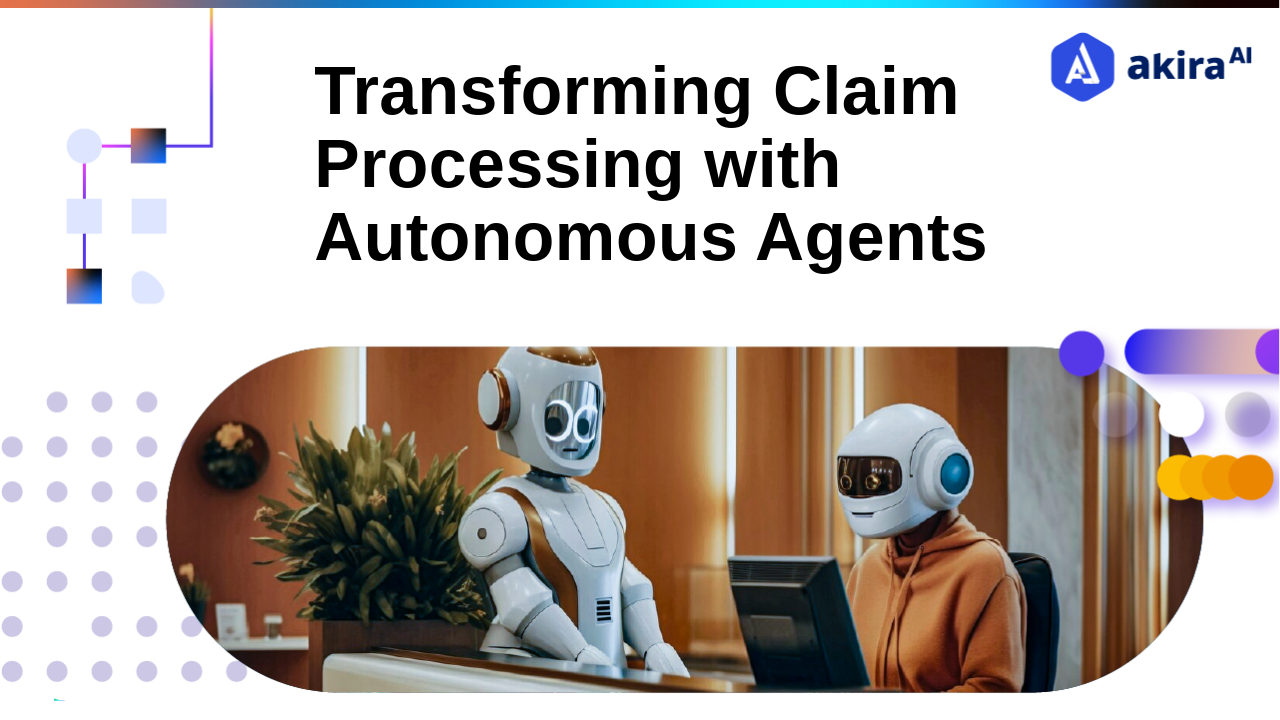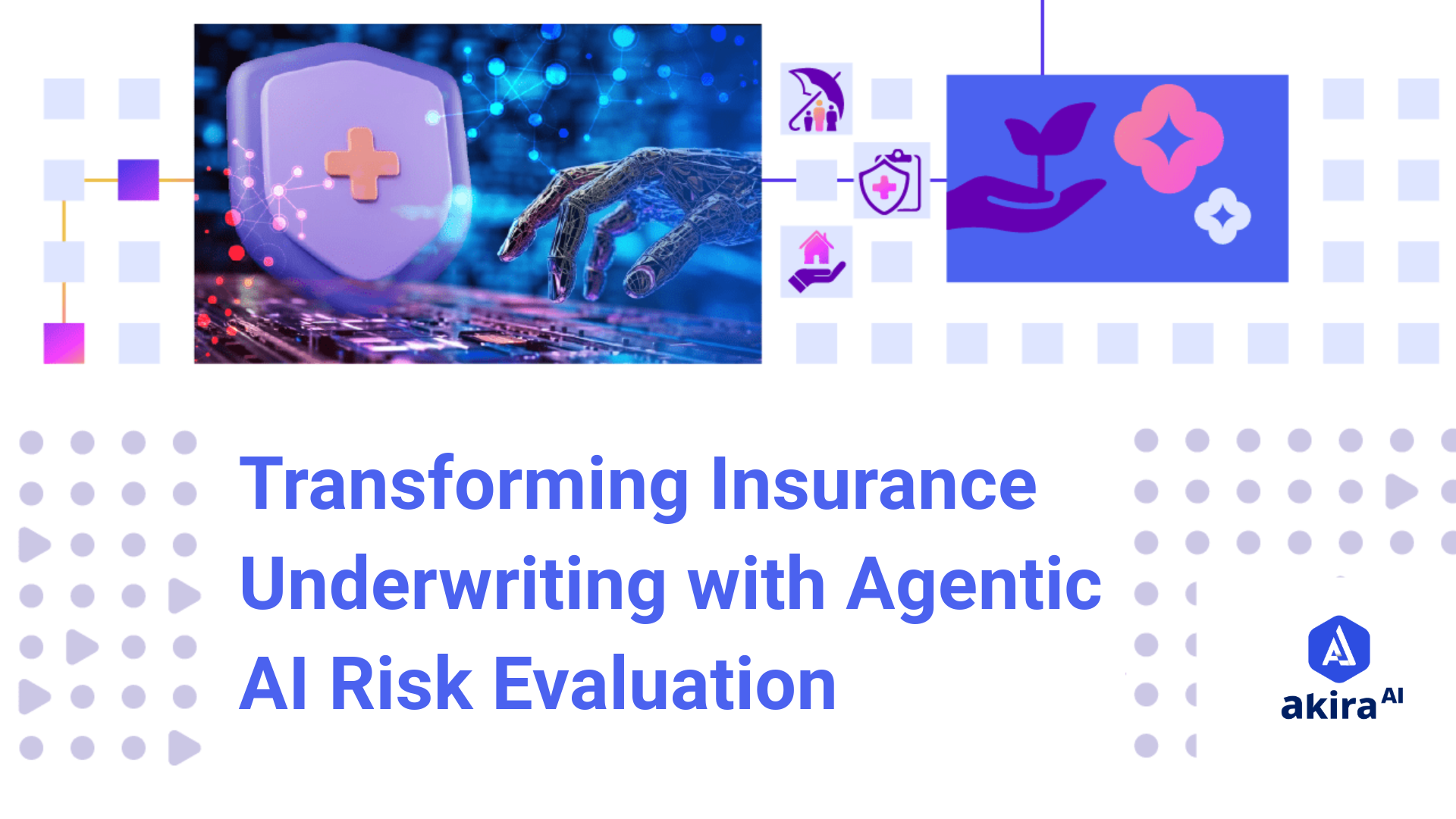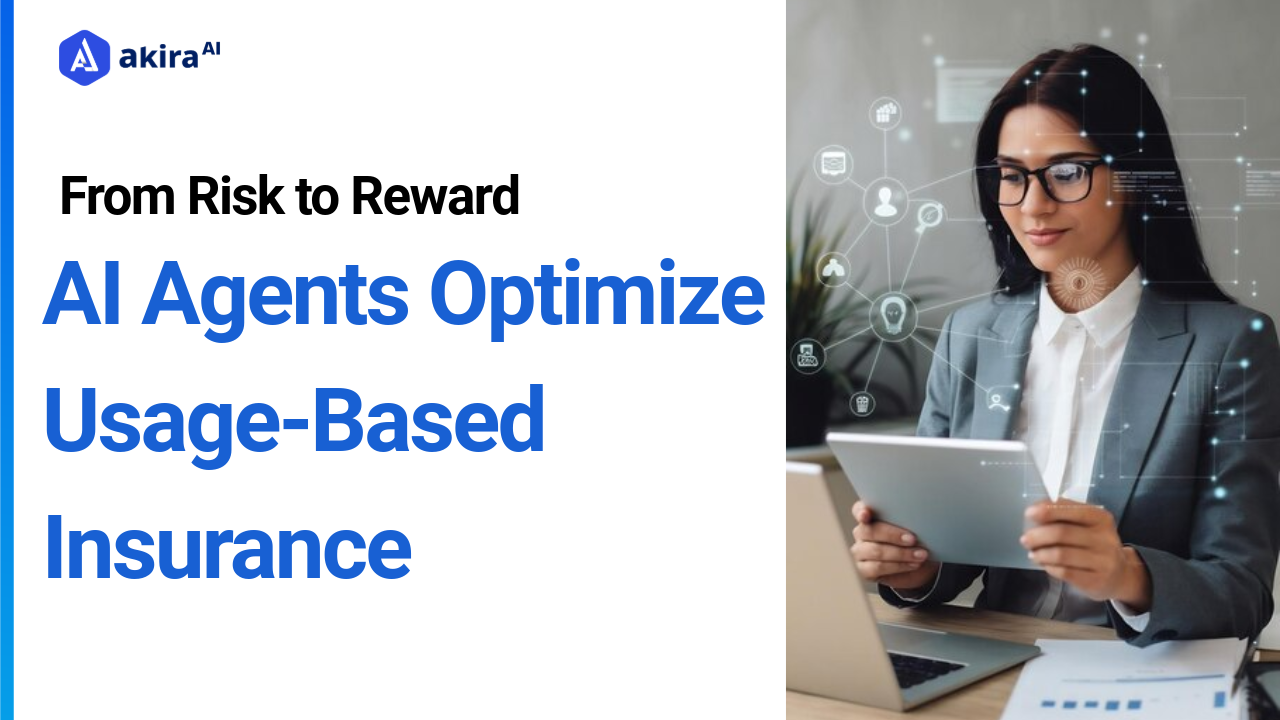Key Insights
-
Faster Claim Processing: Automation significantly reduces processing times, enabling quicker payouts and improving customer satisfaction.
-
Enhanced Fraud Detection: Advanced algorithms detect fraudulent activities with greater accuracy, ensuring claims integrity.
-
Cost Efficiency: Streamlined workflows and reduced manual labour lower insurers' operational costs.
-
Improved Customer Experience: Transparent processes and rapid claim resolutions build trust and loyalty among policyholders.

In the rapidly evolving insurance industry, autonomous claim processing is emerging as a game-changer. By utilizing advanced digital systems, this approach allows insurers to handle claims more efficiently, with reduced reliance on manual intervention. From the moment a claim is submitted to the final payout, autonomous claim processing streamlines each step, ensuring faster, more accurate resolutions.
This shift improves insurers' operational efficiency and enhances policyholders' experience by offering quicker response times and greater transparency. In this blog, we’ll explore how autonomous claim processing is transforming the insurance landscape and what it means for the future of claims management.
What is Autonomous Claim Processing?
Automated claim processing revolutionizes the insurance industry by digitizing and streamlining every step of the claims lifecycle. This process involves automated data extraction, validation, and decision-making, significantly reducing the need for manual intervention. By leveraging advanced systems, insurers can quickly process high volumes of claims with precision, minimizing errors and administrative overhead.
Automated workflows enhance fraud detection, improve the accuracy of assessments, and accelerate payouts. This innovation not only reduces costs but also boosts customer satisfaction by delivering faster, fairer resolutions, establishing trust, and optimizing operational efficiency across the board.
A Brief Overview of Autonomous Claim Processing
Autonomous claim processing in insurance is a transformative approach that uses digital systems to independently handle the various stages of a claim, from submission to resolution. This method eliminates much of the manual work traditionally associated with claims processing, such as data entry, verification, and assessment, allowing claims to be processed more quickly and accurately. By integrating data from multiple sources, these systems can assess claims based on predefined criteria and make decisions without the need for human intervention.
The autonomous process is designed to improve efficiency by reducing the time it takes to resolve claims, thereby providing faster payouts to policyholders. Additionally, it helps reduce operational costs for insurance companies, as it minimizes the need for extensive claim adjuster involvement. This shift also enhances customer satisfaction, as policyholders can often track and receive updates on their claims in real-time, leading to greater transparency and trust in the insurance process.
Traditional vs. Agentic AI-Based Claim Processing
|
Aspect |
Traditional Claim Processing |
Agentic AI Claim Processing Solution |
|
Error Handling and Adaptation |
Human intervention is needed for errors |
Learns and adapts to correct errors automatically |
|
Scalability and Efficiency |
Scalability issues with high volumes |
Efficiently handles large volumes without extra resources |
|
Customer Experience |
Limited interaction and longer response times |
Real-time updates and support enhance the experience |
|
Data Analysis and Insights |
Basic reporting, limited trend analysis |
Advanced analytics for deeper insights |
|
Cost Efficiency |
Higher costs due to manual processes |
Significant cost reduction through automation |
|
Compliance Management |
Manual tracking can cause delays |
Automated compliance checks ensure adherence |
Akira AI: Multi-Agent System for Claim Processing
Fig 1: Architecture Diagram of Autonomous Claim Processing
-
Incident Initiation: At this stage, sensors and cameras at the incident site capture critical data, including images, video, and sensor readings. The insurance company receives this information to trigger the claims process. Immediate data capture reduces the risk of missing key details, ensuring accuracy from the outset.
-
Incident Reporting: The claimant submits their report, along with documents such as police reports, accident photos, and medical records. The system processes these documents, extracting relevant data such as policy numbers, claim descriptions, and incident details. The data is formatted for easy integration into the system for further analysis.
-
Multi-Agent Assessment: The processed data is fed into the Multi-Agent System (MAS), where specialized agents assess the claim. Simple claims are routed for automatic processing, while more complex claims are flagged for further investigation. The MAS is designed to improve decision-making accuracy by using various data sources, ensuring the claim is categorized properly.
-
Vision Agent’s Role: The vision agent examines the images captured from the incident site. Using Convolutional Neural Networks (CNNs) can identify damaged areas and assess their severity. The vision agent’s integration with the knowledge graph ensures a comprehensive assessment, correlating the visual data with textual information like policy terms and incident descriptions, ensuring the claim is contextualised.
-
Final Processing: After all assessments, the system automates the routine administrative tasks of claim processing. This includes generating necessary documents, confirming repairs, and scheduling services like vehicle repairs. With this automation, the administrative workload is minimized, and the claim is quickly and accurately closed, enhancing customer satisfaction and operational efficiency.
Use Cases and Applications of AI Agents for Claim Processing
-
Automated Data Entry: AI agents extract and input data from claims forms, minimizing manual errors. This significantly speeds up processing times, improving overall efficiency.
-
Fraud Detection: AI algorithms analyze claims patterns to identify anomalies and potential fraud. This proactive approach helps protect insurers from significant losses.
-
Customer Support: Virtual assistants manage customer inquiries in real-time, providing instant updates. This enhances communication and improves overall customer satisfaction.
-
Claims Triage: Autonomous agents prioritize claims based on urgency and complexity, ensuring critical cases are processed first. This leads to faster resolutions for high-priority claims.
-
Document Verification: Agentic AI verifies submitted documents against compliance standards, ensuring accuracy. This reduces review times and expedites the claims process.
-
Claims Forecasting: These agents analyze historical data to predict claim trends and patterns. This helps insurers prepare for fluctuations and manage resources effectively.
-
Risk Assessment: Autonomous agents evaluate claim risk profiles, enabling informed payment decisions. This improves overall risk management and reduces potential losses.
Operational Benefits of Claim Processing
Workload Management: AI agents are expected to handle 80% of claims processing tasks by 2025. This will significantly reduce the burden on human staff, allowing for better focus on complex issues.
Productivity Boost: These agents can enhance productivity in claims processing by up to 30%. This allows teams to concentrate on more strategic and complex tasks.
Efficiency Gains: Automating routine tasks can lead to a 25% improvement in efficiency. Quicker cycle times enable faster claim resolutions and better customer experiences.
Fraud Loss Reduction: Enhanced fraud detection capabilities can lead to a 10-15% decrease in fraudulent claims. This not only protects revenue but also strengthens insurer credibility.
Operational Cost Savings: Streamlining processes can result in a 20% reduction in operational expenses. This improvement directly impacts the bottom line and enhances financial stability.
Customer Retention Improvement: Improved customer service through agentic AI can boost retention rates by 5-10%. Satisfied customers are more likely to remain loyal, contributing to long-term profitability.
Technologies Transforming Claim Processing with AI Agents
-
Natural Language Processing (NLP): NLP enhances communication between customers and claims processors through chatbots. This technology allows for seamless interactions and immediate assistance.
-
Machine Learning: Machine learning algorithms learn from historical claims data to improve accuracy. This significantly enhances both fraud detection and claims assessment processes.
-
Robotic Process Automation (RPA) automates repetitive tasks such as data entry and document management. This frees human resources for more strategic activities and improves overall workflow.
-
Predictive Analytics: Predictive analytics utilize historical data to forecast claim trends. This insight aids insurers in better decision-making and resource allocation.
-
Image Recognition: Image recognition technology assists in quickly analyzing images related to claims. This speeds up the validation process and enhances overall efficiency.
-
Blockchain Technology: Blockchain ensures secure and transparent record-keeping for claims. This increases trust among stakeholders and reduces the potential for disputes.
-
Data Analytics Platforms: These platforms aggregate and analyze vast amounts of data for actionable insights. This drives more effective strategies in claims processing and management.
The Future Trends of AI Agents in Claim Processing
-
Increased Personalization: Agentic AI will tailor claims processes to individual customer needs, enhancing user experience. Personalization fosters greater customer satisfaction and loyalty.
-
Enhanced Predictive Capabilities: Future AI agents will leverage advanced analytics to predict claim outcomes more accurately, improving the overall effectiveness of risk assessment.
-
Integration with IoT: These agents will utilize data from IoT devices to streamline claims related to accidents and damages. This integration will lead to quicker and more accurate claim resolutions.
-
Continuous Learning: AI systems will evolve through ongoing learning, enhancing their accuracy and efficiency. This adaptability ensures that claims processing remains effective over time.
-
Regulatory Compliance: Future AI solutions will incorporate real-time compliance checks to meet changing regulations. This proactive approach reduces the risk of non-compliance issues.
-
Collaborative AI: Autonomous agents will work alongside human agents, enhancing decision-making processes. This collaboration will improve overall outcomes in claims processing and customer interactions.
-
Enhanced Security Measures: Future AI technologies will integrate advanced cybersecurity protocols to protect sensitive data. This focus on security ensures that customer information remains safe from breaches.
Conclusion: AI Agents for Claim Processing
Akira AI’s autonomous claims processing solution is a game-changer for the insurance industry. By embracing this innovative technology, insurers can modernize their operations and stay competitive in a rapidly evolving landscape. The AI-driven approach reduces operational costs and enhances efficiency, allowing for faster claim resolutions. Furthermore, it significantly improves customer experience by providing real-time updates and support. As insurers navigate the challenges of the digital age, adopting Akira AI’s solution positions them to meet customer expectations effectively while driving growth and innovation. This strategic move is essential for any insurer aiming to thrive in today’s market and deliver exceptional service.
Next Steps
Connect with our experts to explore implementing advanced AI solutions for autonomous claims processing. Discover how AI agents, Intelligent Automation Tools, and Decision Intelligence can transform insurance operations, enhance customer experiences, and streamline workflows.



